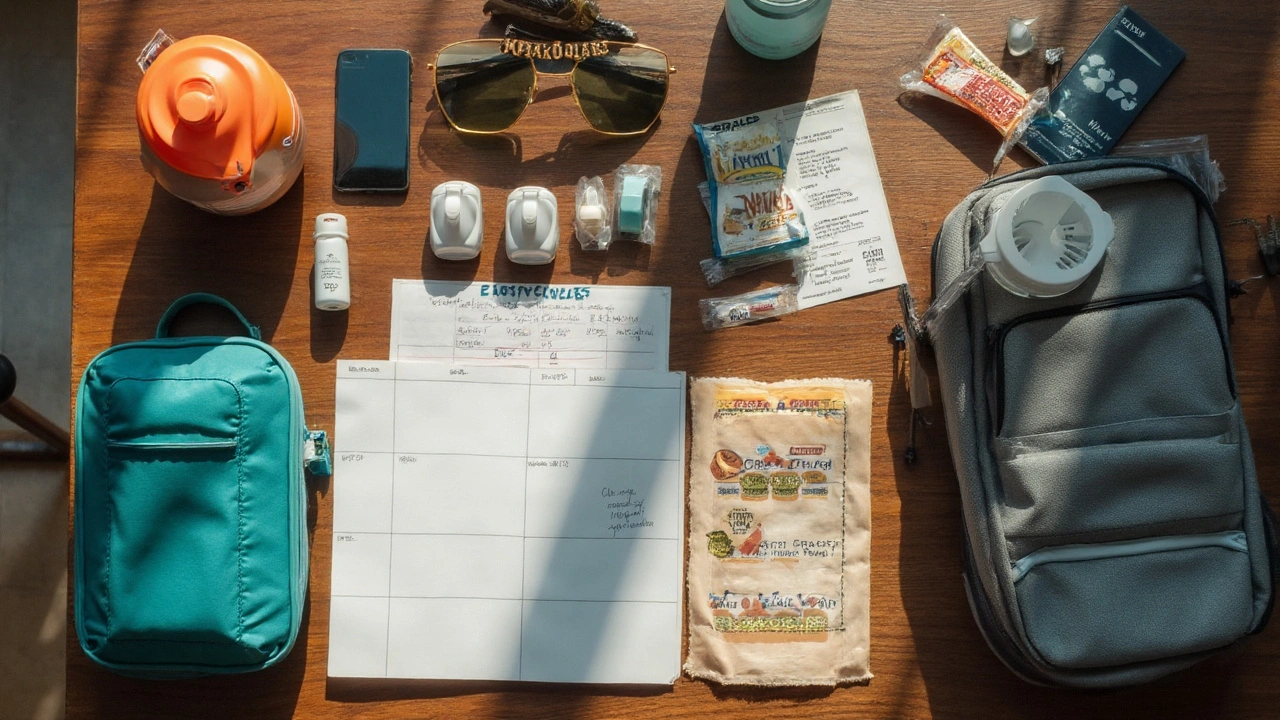Traveling with XLH: What You Need to Know Before You Go
If you have X‑linked hypophosphatemia (XLH), planning a trip can feel like a whole extra project. The good news is that with a few smart steps you can keep your health steady and still enjoy the adventure. Below you’ll find a straightforward checklist and real‑world advice that fits most travel styles.
Pack Your Medical Kit Like a Pro
Start with a medication list that includes every dose, brand name, and timing. Put a copy in your carry‑on and another in your checked bag. Bring at least double the amount you think you’ll need, plus a few extra days in case of delays. Small, resealable bags for pills, syringes, and any cooling packs make it easier to stay organized.
Don’t forget a doctor’s note that explains why you need the meds. This helps at airport security and if you have to see a pharmacist abroad. Some countries require a prescription in the local language, so ask your doctor to write a brief translation or use an online medical translation service.
Choose Destinations That Fit Your Needs
Look for places with good medical infrastructure. Large cities usually have pharmacies that carry a wider range of products and English‑speaking staff. If you’re heading to a rural area, research the nearest hospital and whether they accept your health insurance.
Climate matters, too. Extreme heat can worsen bone pain, while very cold weather may increase the risk of fractures. Aim for moderate temperatures and bring layers that let you adjust quickly.
Accessibility is another factor. Check if hotels have wheelchair‑friendly rooms, grab bars in the bathroom, and easy‑to‑reach sinks. Many booking sites now let you filter for these features.
Managing Nutrition on the Road
XLH often means you need extra phosphate and vitamin D. Pack snacks that are high in these nutrients—think cheese sticks, fortified cereals, or nuts. When you eat out, ask the server about ingredients and request low‑sodium, low‑phosphate options if needed.
Stay hydrated. Dehydration can increase muscle cramps, so carry a reusable water bottle and refill it regularly. If you’re traveling to a place with unsafe tap water, bring a portable filter or buy bottled water.
Insurance, Emergency Plans, and Peace of Mind
Buy a travel insurance policy that covers pre‑existing conditions. Read the fine print to see if XL‑related treatments, hospital stays, and prescription refills are included. Keep the policy number and a contact number on your phone and in your wallet.
Write down the emergency numbers for the country you’re visiting, plus the address of the nearest hospital that can handle XLH complications. Share this info with a travel companion or a friend back home.
Stay Active, Stay Safe
Light exercise helps keep joints flexible, but avoid high‑impact activities that could cause fractures. Walking tours, gentle yoga, and swimming are usually safe choices. If you’re unsure, ask a physical therapist for a quick set of low‑risk exercises you can do in a hotel room.
Finally, listen to your body. If you feel unusual pain, fatigue, or swelling, stop the activity and rest. It’s better to miss one site than to push through and end up with a serious injury.
Traveling with XLH doesn’t have to be a headache. By packing smart, picking the right spots, and keeping your health plan front‑center, you can focus on the sights, sounds, and experiences that make the trip worth it. Safe travels!
Hypophosphatemia Travel Tips: Safe Flying, Time‑Zone Dosing, and On‑the‑Go Management
- Benjamin Aghaki-Allen
- Health
- 0 comment
Traveling with hypophosphatemia? Practical tips for meds, time zones, flights, food, heat, illness, and emergencies-so you stay steady and enjoy the trip.
VIEW MORECategories
Popular posts
-
Bottled Viagra (Sildenafil) vs ED Alternatives: Full Comparison Guide
Benjamin Aghaki-Allen -
Lisinopril vs. Other Blood‑Pressure Drugs: A Straight‑Forward Comparison
Benjamin Aghaki-Allen -
How to Buy Cheap Generic Bupropion Online Safely
Benjamin Aghaki-Allen -
Prasugrel: Uses, Dosage, Side Effects, Warnings, and Safer Alternatives (2025 Guide)
Benjamin Aghaki-Allen -
Antibiotics and Myasthenia Gravis: What You Need to Know About Neuromuscular Weakness Risks
Benjamin Aghaki-Allen
Popular tags
- side effects
- online pharmacy
- dietary supplement
- alternatives
- dosage
- gut health
- weight management
- quality of life
- cheap generic Zoloft
- affordable sertraline
- blood pressure medication
- ED medication comparison
- Tadalafil
- comparison
- music therapy
- relapsing-remitting disease
- multiple sclerosis management
- anxiety and fatigue relief
- rhythmic auditory stimulation
- blond psyllium
